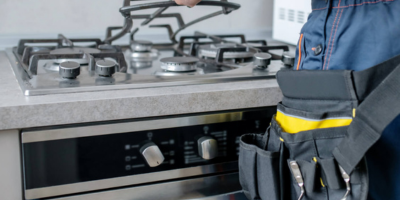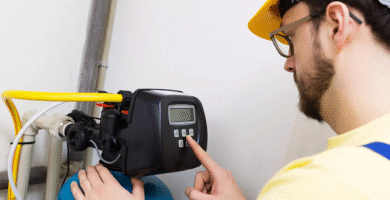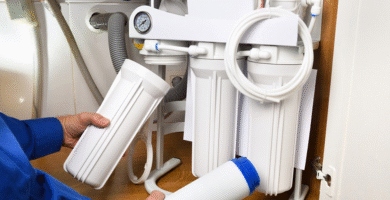When the Heat’s Gone: A Candid Guide to Repairing and Maintaining Your Kitchen’s Heartbeat

It was a Sunday morning, the kind where everything feels slow and comforting—until my stovetop refused to light. One burner was dead silent. Another clicked but never ignited. And there I was, holding a pan full of eggs and nowhere to cook ’em. That’s when it hit me: your kitchen isn’t just about ingredients or recipes—it’s about the equipment that makes it all happen.
And when that equipment falters? Well, let’s just say takeout becomes a little too familiar.
So if you’ve ever jiggled a knob, muttered at a malfunctioning flame, or stared helplessly at a cold burner—you’re in good company. Let’s talk about the less glamorous, totally necessary world of cooktop repair and keeping your kitchen humming the way it should.
Not Every Problem Needs a Pro (But Some Definitely Do)
First things first—don’t panic. Appliances break. Wires wiggle loose. Food spills in the wrong places. That doesn’t mean your entire unit is toast.
A lot of common issues can actually be handled with a little know-how, a screwdriver, and maybe a YouTube video or two. For instance, if your electric cooktop isn’t heating, check the coils. Are they plugged in properly? Have they warped from overuse? Or, if you’re using gas and hear clicking without ignition, try cleaning the igniter with a soft toothbrush—grease and crumbs love to hide there.
But—and this is important—if you smell gas, see sparks, or hear anything resembling electrical buzzing, stop. Turn off the power or gas valve, and call in a professional. Playing DIY electrician isn’t worth the risk.
Sometimes, knowing when to step aside is the most useful tool you can own.
That One Burner That’s Always Moody? Time for a Fix
Every kitchen has “that one burner.” You know the one—it’s slow, inconsistent, or just refuses to light unless you perform some sort of burner dance. Maybe you’re already used to working around it, adjusting your timing or just avoiding it altogether.
But let me tell you, life’s too short for dysfunctional burners.
A proper stove burner fix often comes down to cleaning, replacing worn-out parts, or tightening a connection. Most issues stem from igniter failure, blocked gas flow, or damaged control knobs. These are fixable—and often way cheaper than replacing your entire cooktop.
When I finally had a tech out to look at mine, I expected some massive overhaul. Instead, it was a simple part swap, and the whole job took about 30 minutes. I’ve been sautéing happily ever since.
Preventive TLC: It’s Not Sexy, But It Works
Maintenance doesn’t get much love. It’s not flashy. It’s not something you can show off on Instagram. But here’s the truth—cooking appliance maintenance is what separates a short-lived kitchen from a long-haul workhorse.
Just like changing the oil in your car or sharpening your knives, routine appliance care pays off big. Clean the burners and drip pans every couple of weeks. Check for gas leaks with soapy water if you smell something off. Wipe down control panels—gently!—to avoid buildup that can gunk up your buttons.
Also, invest in a voltage regulator or surge protector for electric cooktops. Those little spikes in electricity can fry internal components faster than you’d think. And always use cookware that matches the burner size. Too small, and you risk heat damage to the surrounding surface. Too big, and you get uneven cooking (and wasted energy).
When to Repair, When to Replace?
It’s the age-old question. Should I fix this thing, or toss it and start fresh?
If your cooktop is over 10–12 years old, replacement might make more sense—especially if you’ve had multiple issues in the past year. But if it’s still got some life left and the problem is localized (like one burner out or a control issue), repair is probably the better move.
Ask yourself: Has performance noticeably dropped across the board? Are parts still available? Have your utility bills gone up mysteriously? These clues help you decide which route to take. A good repair tech won’t push you toward replacement unless it’s truly the smarter option.
The Heart of Your Kitchen Deserves Care
We often romanticize kitchens as the “heart of the home,” but forget that even hearts need regular check-ups. Ignoring your cooktop, oven, or stove doesn’t just make cooking frustrating—it can be downright dangerous over time.
So yeah, it’s not glamorous to talk about burner igniters or coil replacements. But being proactive about repairs and maintenance means fewer dinnertime disasters and more smooth-sailing meals. It’s the difference between dreading dinner and actually looking forward to it.
And trust me—there’s nothing like the quiet satisfaction of a stovetop that clicks to life on the first try.
Keep it clean. Keep it functional. And when in doubt? Ask a pro. Because the heat in your kitchen shouldn’t be a guessing game—it should be reliable, safe, and ready when you are.





